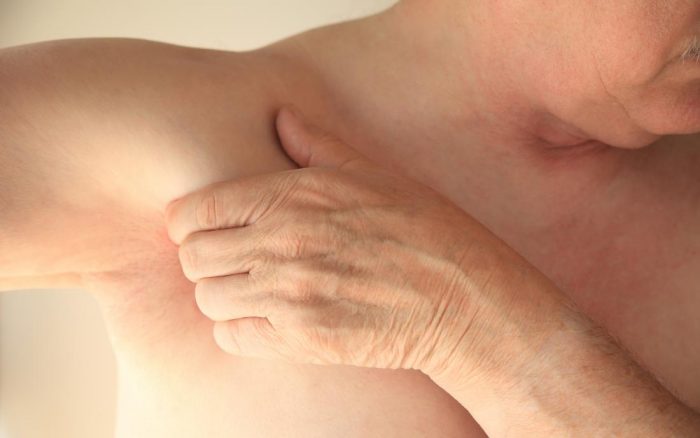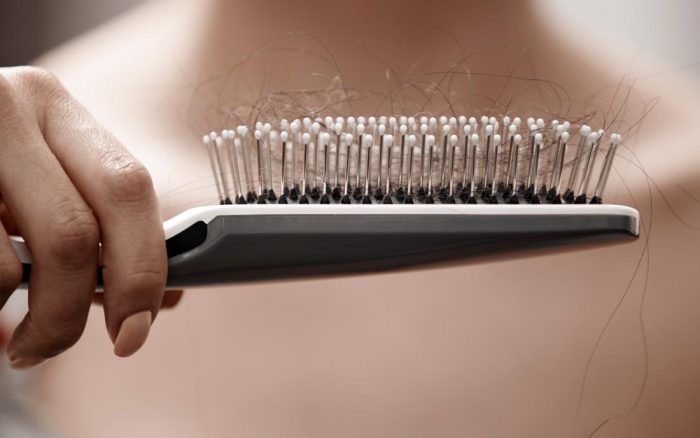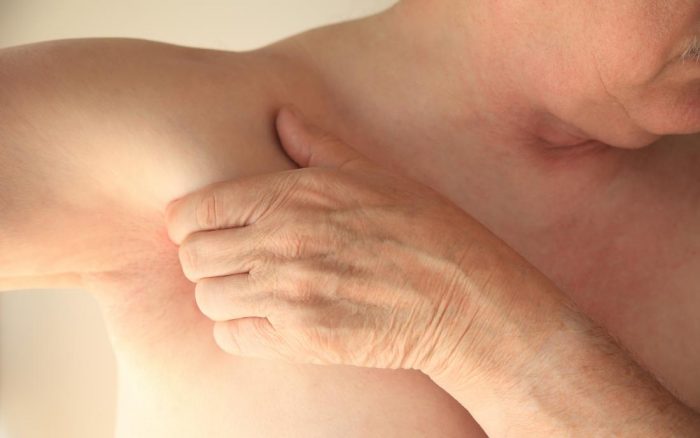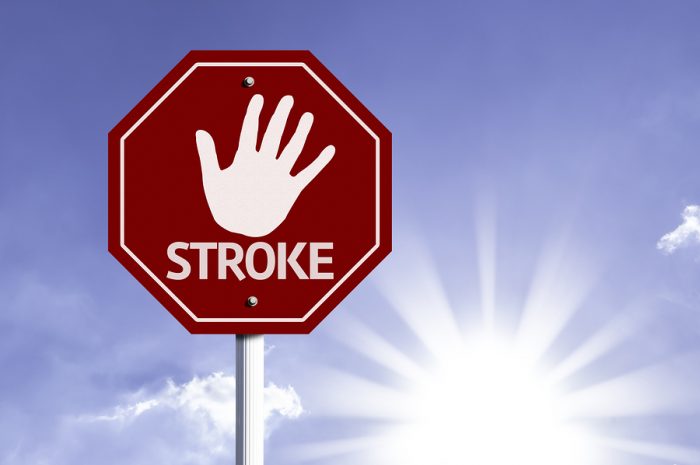Pain under the left armpit can be concerning, and many people associate any pain on the left side of their body with a heart attack. However, most of the time, pain under the left armpit has a less serious cause.
The armpit is a complex meeting point for muscles and connective tissues, lymph nodes, and blood vessels. As such, many issues in this area can lead to pain.
Causes range from pulled muscles and mild allergic reactions to more severe issues, such as an underlying infection.
While many of the causes of left armpit pain are not harmful in the long term, anyone experiencing breathing difficulties and pain in their chest, jaw, or neck should see a doctor immediately.
Causes of left armpit pain include:
A pulled muscle
Many muscles around the shoulder and armpit can cause pain if a person injures them.
People can pull a muscle when reaching for an object, twisting incorrectly, or overstretching.
People who exercise regularly, especially those who do weight training, may be more likely to experience muscle pulls and strains.
In these cases, the pain should go away over time, as long as the individual rests the injured muscle and does gentle stretches.
If the pain does not go away after about a week, it is best to see a doctor.
Allergic reactions
Armpits are a frequent location for allergic reactions, which could cause pain under the left armpit or both armpits.
Most allergic reactions in this area will occur due to chemicals people apply to their bodies or clothes that touch the armpits.
Possible allergens include:
- detergent
- fabric softener
- soap
- deodorant
- perfume
- shaving cream
- moisturizing creams or lotions
These products may contain chemicals or perfumes that irritate the skin. A rash may also form.
Anyone who suspects that their skin is sensitive to a particular allergen should note the products they used that day and report them to a dermatologist.
Allergy testing may help find the irritating product. Avoiding products with any harsh chemicals or other ingredients can also improve symptoms in these cases.
Cosmetic procedures
Simple cosmetic procedures, such as shaving or waxing, can also be to blame for pain under the armpit. These hair removal techniques may lead to other issues, such as ingrown hairs, cysts, or general irritation and chafing in the armpit.
Skin infections
A skin infection under the armpit may cause itching and pain. Bacteria thrive in warm, damp environments such as the armpits.
An overgrowth of bacteria in this area may lead to an infection, which could cause redness, swelling, and pain, among other symptoms.
Other forms of infection, such as fungal infections due to ringworm or yeast, may also cause similar pain and irritation in the area.
Mild skin infections should clear up without treatment if a person keeps the area clean and dry. However, a doctor may recommend antibiotic creams or medications to treat more severe cases.
Hidradenitis
Hidradenitis is a chronic condition that causes similar symptoms to severe acne. Hidradenitis occurs due to clogged hair follicles and glands. It is common in areas such as the armpits, where the skin rubs together.
Hidradenitis can lead to multiple cysts or boils developing in the area. In addition to these breakouts, the person will likely experience pain and tenderness.
Doctors can treat hidradenitis with anti-inflammatory medications. Some cases may require surgery.
Varicella zoster virus
The varicella zoster virus causes chickenpox and shingles. Breakouts of both illnesses are possible under the armpits, although chickenpox usually beginsTrusted Source on the face, back, and chest.
A shingles rash usually developsTrusted Source as a single strip on one side of the face or body, left or right. A person with shingles may also experience:
- a fever
- headaches
- chills
- an upset stomach
A person may feel pain and tingling in the area before the visible rash develops.
A doctor may prescribe antiviral medications to speed up the healing process, as well as pain medications to help ease symptoms.
Swollen lymph nodes
Lymph nodes are small, bean shaped bundles of tissue that play a vital role in the immune system. Lymph nodes help filter toxins from the lymph and deliver white blood cells to help fight disease.
The armpit houses a large number of lymph nodes. Lymph nodes swell as part of an overall reaction by the immune system, such as to an infection or illness.
Swollen lymph nodes in the armpit may cause:
- a single or multiple lumps
- tenderness
- pain
If the swelling does not go down after an infection, such as the common cold, goes away, or the person is not feeling any other symptoms, they should speak to a doctor.
Psoriasis
Psoriasis is an autoimmune condition that leads to an overgrowth of skin cells. The buildup of skin cells forms patches called plaques. These plaques can cause symptoms such as itching and pain.
Psoriasis plaques can form anywhere, including the armpit. Some forms of psoriasis are more common in this area, including inverse psoriasis.
Psoriasis treatment typically includes both topical and oral medications to control symptoms.
Nerve damage
Nerve damage may also cause pain under the armpit. Nerve damage can be the result of a physical injury, such as one from overuse during sports or from an accident or fall.
Nerve damage can feel like:
- pain
- tingling
- numbness
- burning
Certain conditions, such as diabetes, may also lead to nerve damage or neuropathy. The National Institute of Diabetes and Digestive and Kidney Diseases note that up to half of people with diabetes have peripheral neuropathy, which is nerve damage.
While peripheral neuropathy typically affects the feet and legs, it may also affect the arms in some individuals. Diabetes treatment may help slow nerve damage progression.
Angina
Angina occurs due to a lack of oxygen-rich blood flow to the heart. This can be because one of the arteries leading to the heart is narrow or blocked.
Angina causes chest pain and discomfort, which is sometimes severe. It may also cause pressure and pain in other areas, including the:
- armpits
- shoulders
- back
- neck
- jaw
Some people may also experience a feeling similar to indigestion.
Angina is a symptom of an underlying heart condition, for example, coronary heart disease, which can lead to a heart attack.
There are also many other types of angina. Anyone who suspects they have angina should talk to their doctor.
Cancer
In rare cases, pain under the left armpit that does not go away may be a sign of a cancerous growth, including breast cancer.
Cancer can cause the lymph nodes under the armpit to swell painfully. An individual may notice a lump under their arm or in their armpit that causes persistent pain or discomfort.
Underarm pain may also be the result of a specific cancer treatment, such as lymph node removal or mastectomy.
Anyone noticing texture changes or lumps in their chest or breast tissue should seek medical attention.
Treatment options for cancer will depend on its stage, which refers to how much it has spread. In general, earlier stages are easier to treat.
When to see a doctor
Anyone noticing the following symptoms along with left armpit pain should seek immediate medical attention:
- shortness of breath
- dizziness
- pain in the chest, jaw, or shoulder
A doctor can also diagnose and treat pain from other issues, such as infections or swollen lymph nodes.
Pain under the left armpit from sources such as a pulled muscle should go away within about a week in most cases. Anyone who experiences symptoms beyond this time frame should see a doctor for a full diagnosis.
Summary
There are many possible causes of pain under the left armpit. The person may have pulled a muscle or may have swollen lymph nodes from an infection.
Other causes can be more serious, such as angina. Anyone concerned about their symptoms should see a doctor for a full diagnosis and treatment.










